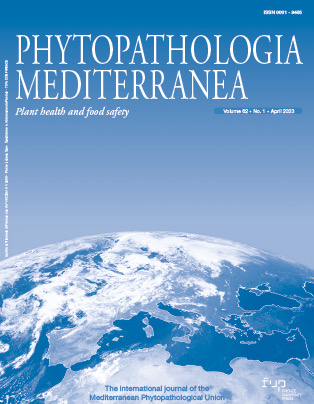Articles
First report of Leptosphaeria maculans and Leptosphaeria biglobosa causing blackleg disease of oilseed rape in Tunisia
Published 2023-04-06
Keywords
- fungal identification,
- Blackleg disease,
- oilseed rape
How to Cite
[1]
E. MAGHREBI, O. BELDI, T. OCHI, B. KOOPMANN, H. CHAABENE, and B. A. BAHRI, “First report of Leptosphaeria maculans and Leptosphaeria biglobosa causing blackleg disease of oilseed rape in Tunisia”, Phytopathol. Mediterr., vol. 62, no. 1, pp. 25–28, Apr. 2023.
Copyright (c) 2023 Essia MAGHREBI, Olfa BELDI, Tahani OCHI, Birger KOOPMANN, Hanene CHAABENE, Bochra Amina BAHRI

This work is licensed under a Creative Commons Attribution 4.0 International License.
Abstract
Blackleg has been observed in oilseed rape in Tunisia since 2017. Morphological observations, pathogenicity tests, and sequencing of the internal transcribed spacer regions for four fungal isolates from affected plants confirmed the presence of Leptosphaeria maculans and Leptosphaeria biglobosa. These results provide the first record of L. maculans and L. biglobosa as causes of blackleg of oilseed rape in Tunisia.
Downloads
Download data is not yet available.






